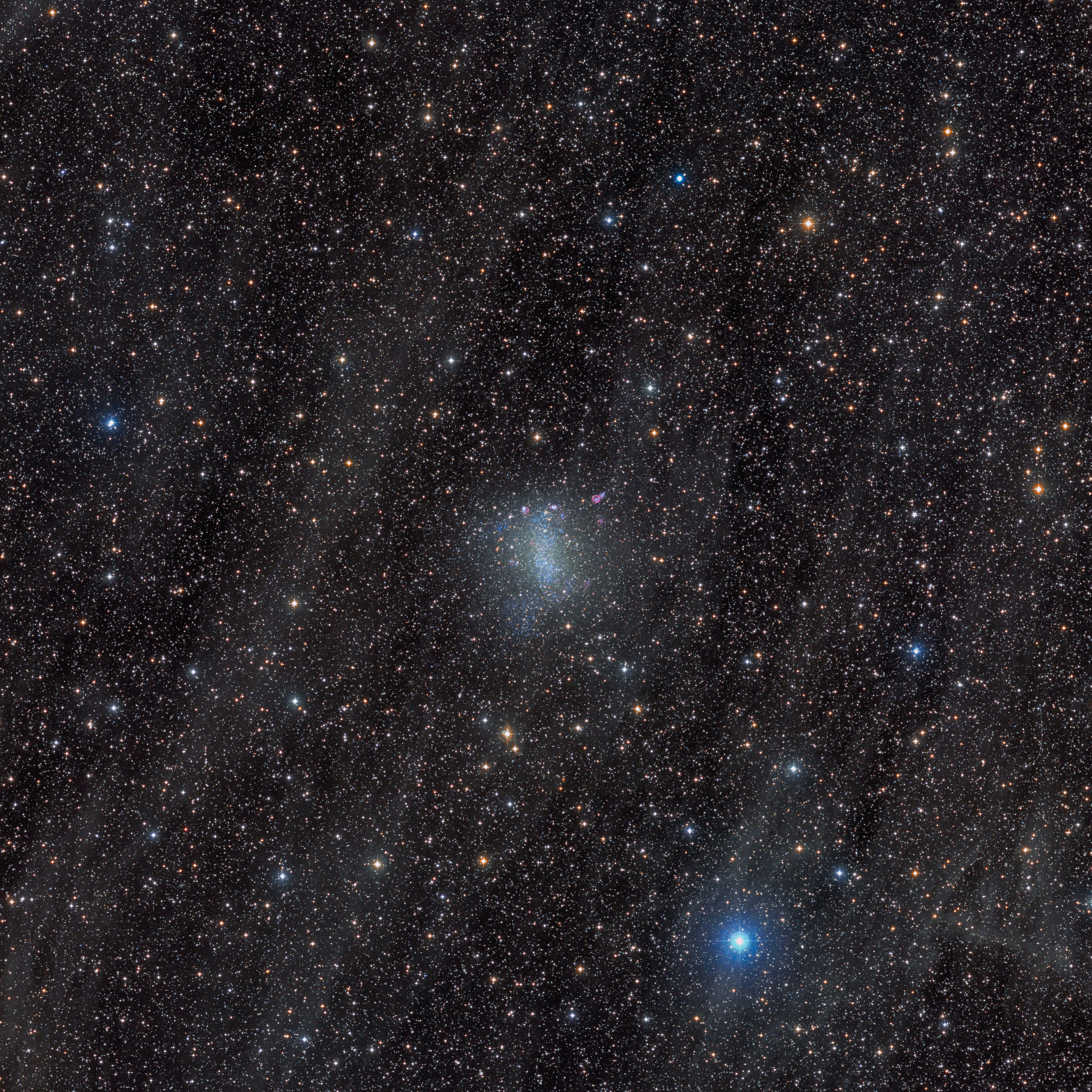
Barnard’s Galaxy (NGC 6822) is the easiest Local Group member to observe in Sagittarius. It was discovered by Edward Emerson Barnard in 1884 with a 6-inch refractor; this late-19th-century Vanderbilt University astronomer was one of the first prolific astrophotographers. His atlas of dark nebulae is a major part of his legacy, but capturing NGC 6822 was also one of his many accomplishments.
At 1.5 million light-years, it is just beyond the gravitational pull of the Milky Way. And at 7,000 light-years across, it’s the same size as the Small Magellanic Cloud, but the irregular galaxy is drifting alone.
Its magnitude of 9.3 is deceptive because the light is spread over 16′ by 14′. With dark skies, I’ve seen this galaxy multiple times in scopes ranging from 6 to 10 inches. Others have seen it in binoculars under magnitude 6.5 skies! Larger apertures coupled with nebula filters will reveal bright emission nebulae, especially on the galaxy’s northern end, making it a fascinating object to view. Paul W. Hodge cataloged 188 HII regions in this galaxy in 1988. He also noted 16 OB associations — groups of hot, luminous stars. Hodge counted 363 stars brighter than 18th magnitude, meaning a 20- to 25-inch telescope may resolve some stars. These may give the galaxy a grainy texture, like a globular cluster just below the limit of your ability to resolve. It’s an interesting target for the serious observer.
A wide-field telescope may also pick up the bright planetary nebula NGC 6818 less than a degree to the north-northwest. The Little Gem Nebula glows at 10th magnitude and spans only 20″ — and at 6,000 light-years away, it is 250 times closer to us.









